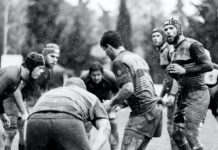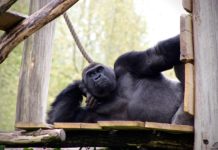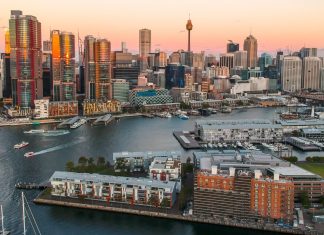COVID has forced the early retirement of Qantas captain Richard de Crespigny, who is best known for landing an A380 when its engine exploded. What can leaders learn from his experience and philosophies?
This is an unlikely but true story about iconic brands being protected by an amazing airline captain, the power of social media, and how to create customer-centric culture. Every enterprise can learn much from this story as it exemplifies the incredible benefits of empowering and trusting employees to not only do their job but also represent the brand – in this case, also save lives. The QF32 incident occurred in November 4th, 2010. The ATSB (Australian Transport Safety Bureau) published their final report in June 2013, and Air Crash Investigations released their documentary in February 2014.
But before both of these, in late 2012 I was fortunate enough to interview Captain Richard de Crespigny in his home. As we discussed the incident, it became very apparent to me that Richard is not only a talented and seasoned pilot, in both military and commercial aviation, but also an exceptional leader. Richard de Crespigny is an example of what Jim Collins calls ‘Level 5 Leadership’. There is much to learn from the culture he imbues on any flight he commands. Richard is more than a professional pilot, he is committed to giving his passengers the best possible experience and being a positive representative of the Qantas, Airbus and Rolls-Royce brands.
On November 4th, 2010, Captain de Crespigny was in command of QF32 flying from Singapore to Sydney. I’ve been on this flight a number of times but not on this occasion. At 7,400 feet during climb-out there was a catastrophic failure of an inboard Rolls-Royce engine resulting in a very rare uncontained explosion. Shrapnel flew out at supersonic speed crippling control systems running along the Q380’s left wing leading edge, peppering the fuselage, invading the underbelly, puncturing two wing fuel tanks in at least ten locations and wreaking havoc with 21 of the 22 aircraft’s systems. In my opinion it was far more serious, and far closer to being a disaster, than anyone has been willing to acknowledge – there was a fire that fortunately self-extinguished in the wind. Jet aviation fuel is kerosene, not petrol, and it burns with low thermal properties.
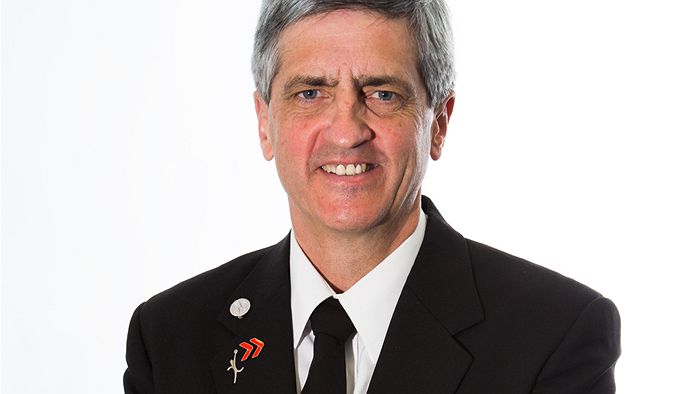
Miraculously, no passengers were injured and, due to the low altitude, the passenger cabin was not compromised by decompression. But exploding shrapnel had penetrated the underbelly, slicing through both of the two main electrical trunk lines – the backbone of the aircraft’s central nervous system. There are many electrical wiring looms within the A380 for inbuilt redundancy but it was incredibly unlucky, and potentially fatal, for two primary looms to be taken out at the same time. Passengers heard several loud ‘bangs’ and could see obvious wing punctures and the fuel vapour trail, but there was far more damage than the eye could see. The largest passenger airliner in the world was severely degraded and had probably lost 50% of system networks and 65% of the aircraft’s roll control. It was set-up for catastrophic cascading events unless the flight deck had the right leadership culture.
On the ground in Indonesia, the engine cowling with the Qantas logo, along with other debris, had rained down over the populated town of Batam, including onto school grounds. No-one had been injured but the Twitter-sphere and Internet were abuzz. The Qantas CEO, Alan Joyce, was travelling in a car with his head of Corporate Communications when they received a phone call asking why Qantas’ share price was falling dramatically. For them this was the first sign of a problem and highlights the instant speed of social media and its power to impact a brand in real-time.
Back up at 7,400 feet there was calm on the flight deck as the world’s most experienced A380 flight crew [literally] dealt with the situation. Qantas has the well-deserved reputation of being the safest airline in the world – it is the oldest continually operating commercial airline globally and no passenger on a Qantas jet aircraft has ever been killed as a result of an incident. All pilots are hired to become captains and this means that they only hire the best. On top of this, Qantas invests heavily in training and every captain is checked-out seven times a year. Just as in the military, there are full and frank peer reviews any time there is an incident. Safety, transparency and accountability are dominant cultural elements for all Qantas pilots – not something that exists in all airlines.
On this particular flight, Captain de Crespigny was being checked by another senior pilot who was himself being trained as a checking captain. This meant that there were five on the flight deck instead of the normal three – the Second Officer (Mark Johnson), First Officer (Co-Pilot Matt Hicks) and three captains – but all had no doubt that there was only one person in command. Before take-off, Captain de Crespigny had ensured that there would be no confusion concerning the chain of command and that everyone’s roles were crystal clear. He discussed these issues at the pre-flight briefing, during the drive to the airport and again before the A380 pushed back from the aerobridge in Singapore.
During the incident everyone knew their roles, and every issue and task was dealt with calmly and professionally. The First Officer, Matt Hicks, dealt with well over one hundred alarms and checklists while Captain de Crespigny concentrated on flying the aircraft, monitoring his First Officer, keeping his situation awareness, weighing his options and laying strategies to complete the flight. The second officer visited the cabin to investigate the damage and to communicate with the Customer Service Manager, Michael von Reth.

Multiple failures had severely degraded the already leaking fuel system. They had lost all ability to transfer fuel between the eleven different tanks creating dangerous imbalances that became worse with time. They had also lost all the wing slats, which provide greater lift and enable the aircraft to fly slower for landing. Back in the passenger cabin, Michael von Reth and his team were calmly assuring passengers while watching for any signs of panic in individuals and then quietly addressing problems with empathy and reassurance.
Everyone on the flight deck and the cabin crew had trained for just this emergency and they instinctively knew what to do. The flight deck team trusted their leader to lead. The leader trusted his team to perform every standard operating procedure and delegated task. The A380 was the most technologically advanced and robust (redundant systems) passenger aircraft in history. They were flying safely and just had to figure out how to mitigate the extensive failures and to get down safely at Changi Airport back in Singapore. Captain de Crespigny knew that height gave them more time and options so he told the flight deck team he was initiating a climb. “No!” they all said in unison. It was the only time in the entire flight that there was any discord – teamwork in action. They were in stable level flight and they did not have all the information about what was wrong… leave everything as it is. No ego, just teamwork. Captain de Crespigny simply said, “okay.”
With less than a 3% margin for error in landing airspeed to pull-up on the available runway they managed an incredibly difficult landing. Way faster than normal and with badly degraded brakes, no reverse thrusters, they came to halt with a mere 100 meters of runway left. But they were not out of danger – 3 tonnes of fuel poured onto the tarmac, pooling around white-hot brakes. The fire crew held back because the outboard engine on the damaged wing would not shut down. Eventually foam was sprayed all over the fuel and Captain de Crespigny decided that the passengers were safer on board than executing an emergency evacuation. Eventually the outboard engine was stopped and everyone walked away safely.
Captain de Crespigny led his team faultlessly and harnessed all the resources available to him. Despite all the damage caused by the Rolls-Royce engine explosion, and despite the potential problems with having too many cooks on the flight deck, Captain de Crespigny maintained a calm atmosphere where everyone knew and performed their roles. At one point in the crisis he re-set the flight deck team to focus on what systems were working rather being focussed on the endless alarms and lists of things that had failed. He communicated clearly and dealt with the realities but focused on the positives. He managed the risks by making sure they didn’t rush and that they triple-checked all calculations. He also quietly prepared for a glide landing (Armstrong Spiral) in the event that all engines failed. Most importantly, he didn’t make assumptions but instead tested the aircraft’s handling characteristics while he had the safety of height before the final approach. This is not standard operating procedure but was a master stroke on his part.
The QF32 incident made headlines around the world but beyond the airmanship, leadership and teamwork on the flight deck, Captain de Crespigny then instinctively continued to lead when back in the terminal with his passengers (customers). Despite his emotional and physical exhaustion from piloting and managing the crisis over four hours in the air and on the ground, he then assumed the role of customer service and Public Relations (PR) representative for Qantas, Airbus and Rolls-Royce.
He didn’t need to refer to a manual to do a masterful job because the culture within Qantas empowered him with shared values of transparency and service excellence. Rather than leave it to PR and customer service people, he took charge and when every passenger was safely in the terminal he went and spoke to them saying: “When you fly Qantas you’re flying with a premium airline and you have every right to expect more. An army of Qantas staff are right now finding you hotel rooms and working out how to get you to Sydney as soon as possible. But right now I want you to write down this number – it’s my personal mobile phone and I want you to call me if you think Qantas is not looking after you or if you think that Qantas does not care.” Then he explained what had happened, why, what would happen next and disclosed everything he knew. He answered every possible question in multiple passenger lounges for over two hours. He prepared everyone for the media circus that would ensue and stayed in the lounge with passengers until there were no more questions – eventually he was standing on his own.
Later, when the media shoved microphones in the faces of passengers asking: ‘Did you think you were going to die?’ – they responded: ‘No, the captain and crew were fantastic; they kept us fully informed at all times.’ When someone else in the press asked: ‘Did the crew or passengers panic?’ – they responded with: ‘Everyone was calm. The captain explained that the fire trucks sprayed water to cool the brakes, laid foam on the leaking fuel and tried to snuff an engine that wouldn’t shut down.’ Captain de Crespigny’s full and open disclosure and personal guarantee had transformed 440 passengers into the best PR and brand agents that Qantas management could have ever hoped for.
1,000 Qantas staff had leapt into action, looking after their customers by organising buses, finding hotel rooms, communicating and meeting individual needs until all 440 passengers were returned safely home. Everyone was deeply grateful to Captain de Crespigny, the flight crews and ground crews for keeping them safe.
None of the passengers ever called Captain de Crespigny’s mobile phone to complain or to ask for help. Richard explained to me that this is his audit process, proving that the entire Qantas organisation performed brilliantly during this extended crisis. Qantas, to their credit, never reprimanded him for overstepping the boundaries of his responsibilities on the ground in the terminal with passengers – they were grateful to have a leader step-up when needed, technically and commercially.
Captain de Crespigny is a shining example of the fact that the leader determines the culture … no, the leader is the culture. He believed that he was not just responsible for flying the aircraft safely but he represented his employer’s and suppliers’ (Airbus and Rolls-Royce) brands. In the days, months and years that followed he neutralized sensationalist media and highlighted that the safety and training culture within Qantas combined with the safety and robustness of the Airbus A380 were the reasons why the incident ended without loss of life.
Richard shies away from individual praise and continually states that it was a team effort – he is right. But make no mistake, had QF32 ended in disaster, and it very easily could have, then he would have accepted sole responsible for the loss of life. That’s the burden of leadership – you don’t get to blame others.
Captain de Crespigny is a classic example of a Jim Collins Level 5 leader and he continued to fly A380s for Qantas until 2020 – when COVID forced retirement. Just as he’s done his entire career, he walks the cabin on long haul flights and talks with passengers. He believes that a good leader has to be seen and nothing reinforces a culture of friendly service more than leaders exposing themselves to customers. Richard de Crespigny’s also knows that no cabin crew want to see passengers complaining about service to the Captain. He has behaved this way his entire career because he is committed to giving passengers their best possible experience. He even built an online community for all the passengers to connect and help deal with their fears or need for additional information.
After reading the book QF32 and also after interviewing him for several hours, I formed the view that Captain de Crespigny embodies the following philosophies to which every leader should aspire:
- Be an unrivalled expert and passionate about what you do. Richard’s intimate knowledge of the A380 helped him manage its systems in a crisis and lead the team with clarity.
- The job is to provide a great experience for customers [passengers], not fulfill the role technically [fly the plane safely].
- Avoid complacency and don’t make assumptions. It is the things you do not know that can get you. Be positively paranoid and manage every conceivable risk.
- Teamwork is everything. Communicate clearly and ensure that everyone knows their role and is empowered to perform it.
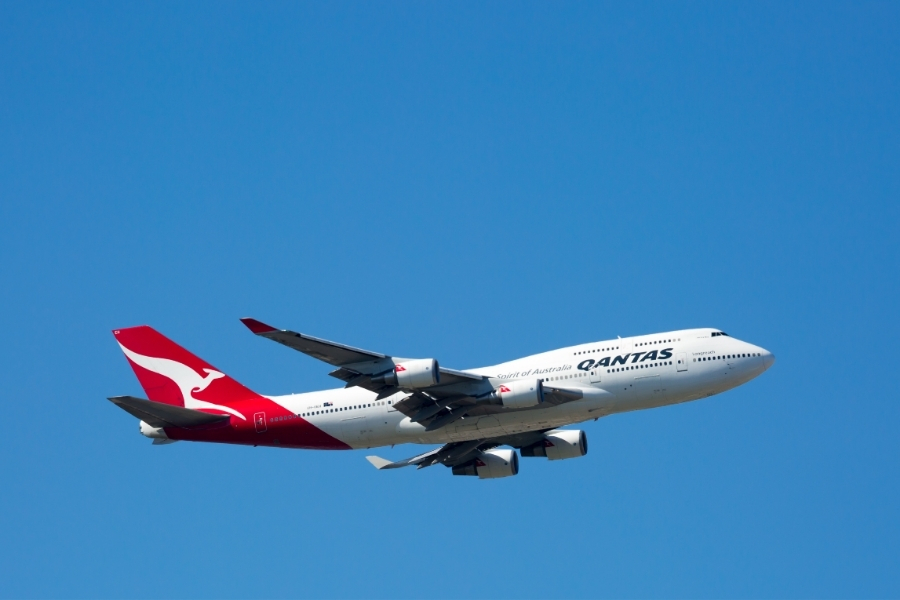
The Qantas A380, Nancy-Bird Walton, which was operating as QF32 on November 4th, 2010 is now back in the air after what was reportedly the longest and most expensive aircraft repair in aviation history. Fly with Airbus, Qantas and Rolls-Royce with confidence – companies that have great cultures.
My advice for every business is to build a great customer-centric culture and empower your people to passionately represent your brand in all channels, especially social.
While I’m on the topic of aviation, here’s what I learned from my own plane crash when flying an aerobatic biplane many years ago.
Below is a keynote I did in 2012 talking about QF32. I have since been converted by Richard to now be a huge fan of Airbus! Also, not all Qantas pilots prefer Boeing – certainly not Richard. Both are brilliant designers and impeccable manufacturers but the philosophy of flight control software laws are different.
See Air Crash Investigations documentary here. Read the Transport Safety Bureau report here. Link to my full white paper: Everyone Represents the Brand – How to Create a Customer Centric Culture.














